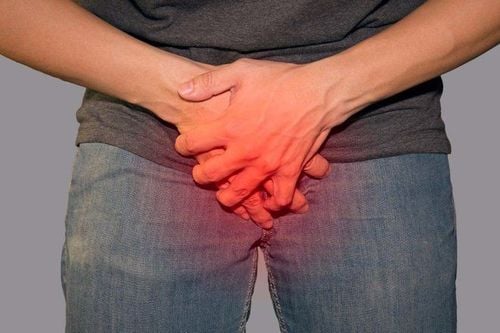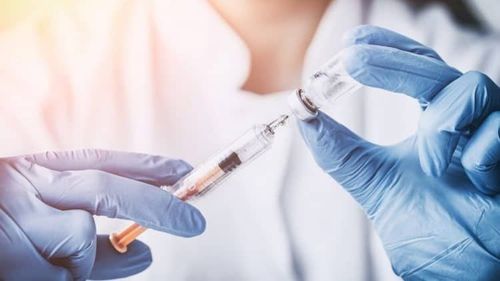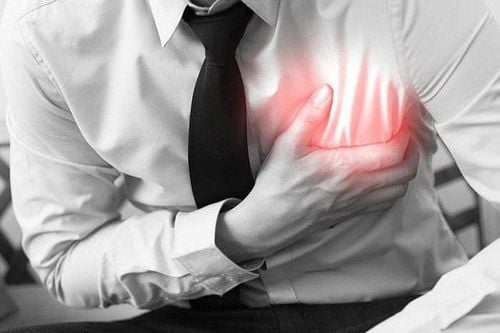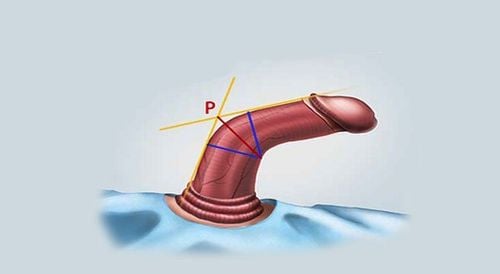This is an automatically translated article.
Caverns are soft, spongy tubes that fill with blood during an erection. Caverns are often injured during sex. Cavernous rupture is most common in an erect state. So what are the signs of cavernous rupture in men?
1. How is the cave structured?
The main role of the penis is to carry urine and sperm out of the body. There are 3 tubes inside the penis. One is called the urethra. It is hollow and carries urine from the bladder through the penis to the outside.
The remaining two tubular sections are called the cavernous bodies. The corpus cavernosum is composed of soft spongy tubes, which are responsible for filling with blood during erection. The corpus cavernosum is enclosed together by a very tough fibrous sheath known as the tunica albuginea. During sex, blood is pumped into the corpus cavernosum, creating a hardening of the penis, making it hard enough to be inserted into a woman's vagina. In this case, the urethra acts as a channel for the ejaculated semen to enter the vagina.
2. The cause of the cave breaking
Caverns are usually less vulnerable than other parts of the body. Some possible causes of injury are:
Car accidents Machine accidents Bullet wounds Burns Sex Sports Animals are most commonly injured during sex. Cavernous lesions are very rarely non-erectile. During an erection, blood flow in the arteries makes the penis erect. During strong thrust, the erect penis can slip out of the vagina and into the partner instead of back into the vagina. The penis may then be bent even though it is erect. You may feel a sharp pain in your penis and may hear a "pop". This often leads to a rapid loss of erection. Pain and sound are produced by a tear in the corpus cavernosum, which is stretched during an erection. Urologists often refer to this injury as a "broken" penile or cavernous trauma. The pain may last for a short time or may continue. Blood can accumulate under the skin of the penis (hematoma) and there can be severe swelling and bruising. Blood at the tip of the penis or in the urine is a sign of serious damage to the urethra.
Placing a rubber tube or other constriction device around the base of the penis too tightly or for too long can also injure the corpus cavernosum. Rings or other hard objects (such as plastic or metal) should never be placed around the penis. These objects can get stuck if the penis swells further. These items can cause long-term damage to the penis if blood flow is blocked for too long. The urethra and/or penis can also be damaged if an object is inserted into the tip of the penis.
Trauma is a painful injury that usually occurs in the lower two thirds of the cavernous body.

Chấn thương vỡ hang vật là một chấn thương gây đau đớn thường xảy ra ở 2/3 dưới của hang vật
3. Signs of a cave break
Bleeding from the penis Dark bruises on the penis Trouble urinating Hears cracking or popping sounds Sudden loss of erection Pain varies from mild to severe Traumatic symptoms A cavernous injury that is not accompanied by a popping sound or a rapid loss of erection is usually due to another type of trauma.
Traumatic cavernous injuries will often cause the penis to be called “eggplant deformity” by doctors, where the penis is purple and swollen. More dangerous symptoms of cavernous trauma include swelling in the scrotum and blood in the urine.
Other conditions that mimic the symptoms of cavernous trauma include rupture of veins and arteries in the penis and rupture of the suspensory ligament of the penis.
Doctors can use imaging techniques and conduct a physical exam to determine the difference between conditions.
4. Diagnosing corpus cavernosum
If you have a cavernous rupture, your urologist will ask you about your medical history and do a physical exam, along with blood and urine tests. The purpose is to assess the extent of damage to the penis.
The urologist may gently place a fiber-optic camera into your urethra to check for damage. You may also have an X-ray called a "retrograde urethrograph".
This is done by injecting a special dye through the urethra and then taking X-rays. If the X-ray shows a leak of contrast material outside the urethra, it may suggest that that part of the urinary tract is damaged. The urologist may also want to see pictures of the inside of your penis with ultrasound (sound waves) or MRI (radio waves in a strong magnetic field).

Nếu bạn bị vỡ hang vật, bác sĩ sẽ tiến hành khám cùng với xét nghiệm máu và nước tiểu để đánh giá mức độ tổn thương của dương vật
5. Treatment of broken caves
5.1 For Sexual Injuries The treatment for a "broken" penis or cavernous shaft during sex is usually surgery. This treatment has lower rates of erectile dysfunction, scarring, and penile curvature. The surgery is done under anaesthesia so you don't feel any pain. The most common surgery is to make a cut around the shaft near the tip of the penis and pull the skin back to the base to examine the inner surface. The surgeon will then remove the clots to help find any tears in the tunica albuginea. Any tear is repaired before the skin is stitched together. A catheter (a thin tube) may be placed through the urethra into the bladder to drain urine and allow the penis to heal. With the entire penis bandaged, you may be hospitalized for 1 or 2 days. You can go home with or without a urinary catheter. You may be given antibiotics and pain relievers. You will have to visit the doctor again to check the healing of the wound.
5.2 For Serious Injury For the rare cases where part of the penis is unfortunately severed, the amputated part should be wrapped in gauze soaked in sterile saline and placed in a plastic bag. The plastic bag should then be placed in a second bag or cooler with an ice pack. Do not place any amputated organs in ice, as water and direct contact with ice are harmful to tissue. If the penis can be reattached, the lower temperature of the slush will increase the chances of success. It is possible to reattach the penis even after 16 hours.
For major trauma to the penis, a urologist skilled in this surgery can often rebuild the penis. How well the penis will function after surgery depends on the extent of its damage.
6. After treatment
Most penile fractures caused by sex and most other minor penile injuries will heal without problems if treated immediately. However, problems can occur. Some of the problems are:
6.1 Infection Erectile dysfunction (caused by a blockage of nerves or blood flow to the penis)
Foreskin stenosis (the penis becomes hard and hard to the point of pain)
Penis curvature (Peyronie's disease) after the wound has healed
6.2 Prevention In most cases, a penile injury from sex can be prevented if your partner is simply aware that it could happen. . Usually, the "fracture" of the penis occurs when the female partner is on. If your penis becomes tight and slips out of your partner's vagina, stop the penetration immediately.
Other penile injuries can be avoided by being careful on the job (especially near machinery), defensive driving, and gun safety.
Vinmec International General Hospital is one of the hospitals that not only ensures professional quality with a team of leading medical doctors, modern equipment and technology, but also stands out for its examination and consultation services. comprehensive and professional medical consultation and treatment; civilized, polite, safe and sterile medical examination and treatment space.
Please dial HOTLINE for more information or register for an appointment HERE. Download MyVinmec app to make appointments faster and to manage your bookings easily.













